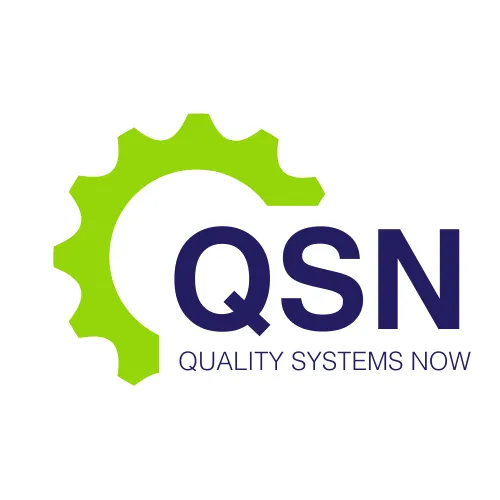NEWS

Companies With Strong Quality Cultures Resolve Issues 25% Faster
Research and practical experience show that companies with strong quality cultures consistently resolve issues up to 25% faster than those without. For manufacturers, biotechnology firms, and testing laboratories, this advantage is not just operational—it has regulatory, financial, and reputational implications.
At Quality Systems Now, we work with organisations across the pharmaceutical, medical device, and diagnostic sectors to help embed quality culture into daily operations. This article explores what constitutes a strong quality culture, why it accelerates problem resolution, and how organisations can implement strategies that improve compliance, efficiency, and product safety.
Understanding Quality Culture
Quality culture goes beyond compliance checklists and audit readiness. It is the collective mindset, behaviours, and attitudes within an organisation that prioritise product quality, patient safety, and regulatory integrity at every level. Companies with strong quality cultures embed these values into everything they do—from research and development to manufacturing, testing, and post-market activities.
Key attributes of a strong quality culture include:
Leadership Commitment – Senior management visibly supports quality initiatives and reinforces their importance in strategic decisions.
Employee Engagement – Staff at all levels understand their role in quality and are empowered to act when they identify risks or deviations.
Transparent Communication – Issues, near-misses, and deviations are reported promptly without fear of blame, enabling faster response.
Continuous Improvement Mindset – Teams actively seek opportunities to refine processes and prevent recurrence of problems.
Integration Across Functions – Quality is not siloed in a department but integrated into all aspects of product development, manufacturing, and commercial operations.
These attributes collectively create an environment where potential issues are identified early, addressed efficiently, and prevented from escalating.
Why Strong Quality Cultures Resolve Issues Faster
Research and industry observations suggest that companies with well-established quality cultures resolve issues approximately 25% faster than organisations with weaker quality frameworks. Several factors contribute to this improvement:
Early Detection – A proactive quality culture encourages staff to report deviations or potential risks as soon as they arise. Early detection reduces the time and resources required to investigate the root cause.
Clear Processes – Strong quality cultures maintain clear, documented procedures for issue investigation, corrective and preventive actions (CAPA), and escalation pathways. Employees know exactly what steps to take, which reduces decision-making delays.
Effective Cross-Functional Collaboration – Quality issues often span multiple departments, including R&D, manufacturing, regulatory, and supply chain. Organisations with integrated quality cultures facilitate communication and collaboration, avoiding delays caused by departmental silos.
Empowered Teams – Employees in strong quality cultures are empowered to make decisions and take corrective action without waiting for multiple levels of approval. This autonomy accelerates resolution while maintaining compliance.
Continuous Learning – Lessons from previous issues are embedded into processes and training, preventing similar problems from reoccurring and reducing future investigation time.
The combination of these factors leads to faster root cause analysis, more efficient corrective actions, and reduced recurrence of problems—all contributing to measurable time savings and improved operational performance.
The Regulatory Advantage
Faster issue resolution is not only operationally beneficial—it has direct regulatory advantages. Regulatory authorities, including the TGA, FDA, and EMA, expect manufacturers to demonstrate effective quality systems, including timely investigation and resolution of deviations, complaints, and nonconformances.
During inspections, regulators evaluate how quickly and effectively a company responds to quality issues. Companies with a strong quality culture are better positioned to demonstrate:
Documented and timely investigation of deviations
Implementation of effective corrective and preventive actions
Continuous monitoring and verification of risk controls
A culture of transparency and accountability
A well-established quality culture not only facilitates faster problem resolution but also strengthens regulatory confidence, reducing the risk of warning letters, audit observations, and other compliance-related consequences.
Building a Strong Quality Culture
Developing a strong quality culture requires more than just policies—it requires strategic planning, leadership commitment, and active engagement at every organisational level. Key strategies include:
1. Leadership Engagement
Senior management must lead by example, actively participating in quality initiatives, reviewing issues, and communicating the importance of quality to all employees. Visible leadership commitment fosters a culture where quality is valued over expedience.
2. Training and Competence
Continuous education ensures that employees understand regulatory expectations, standard operating procedures (SOPs), and the company’s quality objectives. Competent, well-trained staff can identify, report, and resolve issues efficiently.
3. Process Transparency
Implementing clear, documented processes for issue management, CAPA, and change control ensures that everyone knows their responsibilities. Transparency in reporting and investigation fosters accountability and reduces delays caused by uncertainty.
4. Empowerment and Accountability
Employees should be empowered to act within defined boundaries when quality issues arise. At the same time, accountability mechanisms ensure that actions are documented, verified, and monitored. This balance of empowerment and oversight accelerates problem resolution while maintaining compliance.
5. Continuous Improvement
A culture of continuous improvement encourages teams to learn from issues, analyse trends, and implement preventive measures. Over time, this reduces the frequency and severity of quality events, making the organisation more agile and efficient.
6. Metrics and Monitoring
Tracking key quality metrics—such as average issue resolution time, number of repeat deviations, and CAPA effectiveness—provides tangible evidence of performance and highlights areas for improvement. Organisations can use these metrics to reinforce accountability and drive further enhancements.
The Commercial Impact
Beyond regulatory compliance, a strong quality culture provides commercial benefits:
Faster product launches due to reduced delays from quality issues
Lower operational costs from fewer reworks and repeat investigations
Improved customer confidence and reputation
Stronger investor confidence, particularly for early-stage biotechnology and medical device companies
The combination of regulatory, operational, and commercial benefits makes building a strong quality culture a strategic imperative for therapeutic goods manufacturers.
The Role of Quality Systems Now
At Quality Systems Now, we support organisations in embedding quality culture into their operations. Our services include:
Conducting quality culture assessments and gap analyses
Designing and implementing robust issue management and CAPA processes
Training teams on regulatory expectations and best practices
Advising on leadership engagement, metrics, and continuous improvement strategies
Supporting inspection readiness and regulatory submissions
Our approach ensures that quality is not treated as a compliance checkbox but as an integral part of your organisation’s DNA.
Conclusion
Companies with strong quality cultures resolve issues faster, reduce operational risks, and maintain regulatory confidence. By fostering leadership engagement, employee empowerment, process transparency, and continuous improvement, organisations can achieve measurable gains in efficiency, compliance, and commercial performance.
For therapeutic goods manufacturers, biotechnology firms, and diagnostic laboratories, embedding a robust quality culture is not just a regulatory requirement—it is a competitive advantage. Organisations that prioritise quality culture can resolve issues up to 25% faster, accelerating product development, launch, and ongoing market success.
Quality Systems Now partners with organisations to help build these strong quality foundations, ensuring that regulatory, operational, and commercial objectives are met with confidence.
